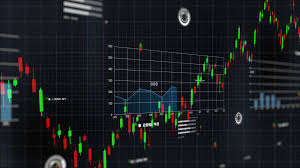
Understanding Crypto Trading High-Frequency
In the fast-paced world of finance, Crypto Trading High-Frequency http://del.gr/component/k2/item/23/23?start=2160 stands out as one of the most intriguing and complex forms of trading. High-frequency trading (HFT) involves the use of sophisticated algorithms to execute a large number of orders at extremely high speeds. This practice has become increasingly important in the crypto markets, where speed can often mean the difference between profit and loss. In this article, we will delve into the nuances of high-frequency crypto trading, examining its benefits, risks, and evolving strategies.
What is High-Frequency Trading?
High-frequency trading refers to the use of powerful computers and complex algorithms to execute numerous trades in fractions of a second. These trades capitalize on very small price changes that occur in liquid markets, which are often too quick for human traders to act upon. In traditional markets, HFT has been used for years, but with the rise of cryptocurrencies, traders are now leveraging these techniques in this digital asset class.
The Mechanics of HFT in Crypto
In the realm of cryptocurrency, high-frequency trading operates on several key mechanisms:
- Algorithmic Trading: At the heart of HFT is the algorithm. Traders develop algorithms that can analyze market conditions, signals, and price movements to make decisions automatically.
- Latency Arbitrage: Given the decentralized nature of the cryptocurrency markets, discrepancies in prices between exchanges can be exploited. HFT can capitalize on these latency differences to make profits before the market adjusts.
- Market Making: High-frequency traders often act as market makers, providing liquidity and earning fees on trades while simultaneously profiting from the bid-ask spread.
Advantages of High-Frequency Crypto Trading
There are several advantages to engaging in high-frequency trading in the cryptocurrency markets:
- Speed and Efficiency: The ability to execute trades in milliseconds allows HFT traders to capitalize on fleeting market conditions and price inefficiencies.
- Reduced Market Impact: High-frequency traders can mitigate their market impact through the precise execution of large orders, often breaking them down into smaller trades.
- Advanced Risk Management: With sophisticated algorithms, traders can implement advanced risk management strategies, allowing for real-time adjustments to their positions.
Challenges and Risks
While high-frequency trading offers potential rewards, it is not without its challenges and risks:

- Market Volatility: The inherent volatility of cryptocurrency markets can pose substantial risks, and rapid price changes may lead to significant losses.
- System Failures: Technical glitches and system failures in trading algorithms can result in catastrophic losses, highlighting the importance of robust technology and backup systems.
- Regulatory Considerations: As governments and regulatory bodies begin to scrutinize cryptocurrency markets more closely, HFT traders may need to navigate complex regulatory landscapes.
Strategies for Success in HFT
Developing a successful high-frequency trading strategy in crypto requires a deep understanding of both the technology and the market. Here are some key strategies employed by HFT traders:
- Backtesting: Traders often run simulations using historical data to refine their algorithms and assess their strategies’ effectiveness before deploying them in live markets.
- Arbitrage Opportunities: Identifying and capitalizing on price discrepancies across various exchanges can yield profitable outcomes in HFT.
- Market Sentiment Analysis: Utilizing sentiment analysis tools can help traders gauge market mood and make informed trading decisions.
The Future of High-Frequency Trading in Crypto
As technology evolves, the landscape of high-frequency trading in the cryptocurrency markets is likely to change dramatically. Innovations in machine learning, artificial intelligence, and blockchain technology will impact how traders operate. The rise of decentralized finance (DeFi) and the maturation of cryptocurrency markets will also open new avenues for both risk and reward for high-frequency traders.
Conclusion
Crypto Trading High-Frequency represents a dynamic and fascinating area of modern finance, combining technical expertise, market understanding, and rapid execution. While it offers substantial opportunities for profit, traders must also navigate a landscape fraught with risks and challenges. By harnessing the power of technology and staying abreast of market developments, high-frequency traders can thrive in the ever-evolving world of cryptocurrency trading.